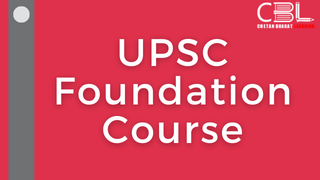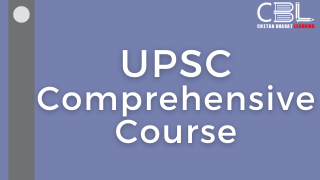Important for
Prelims: Indian Economy
Mains: General Studies III
What is in the News ?
- Union Steel Minister Jyotiraditya Scindia on Saturday said his ministry will push primary steel producers to use 50 per cent of their input from scrapped/recycled steel by 2047 to help achieve the government target of moving into a circular economy.
- Currently, the level of recycled steel usage in primary steel production is only around 10 per cent even though recycled steel contributes to 22.5 per cent of the domestic total steel production of 140 million tonnes, the minister said while addressing the last day of the three-day international conference of material recycling here.
- The 10th conference is being organised by the Material Recycling Association of India and is attended by over 2,000 delegates from 38 countries.
- India currently produces 25 million tonnes of scrap steel and annually imports 5 million tonnes of scrap steel with zero import duty.
Circular Economy
- Circular Economy is a model of production and consumption, which involves sharing, reusing, repairing and recycling existing materials and products as long as possible. Thereby, extending the life-cycle of products.
- Benefits :
- Resource conservation and increased efficiency of product use.
- Reduces environmental pressure.
- Job creation, economic growth and innovation.
- Emergence of new markets and business opportunities.
- Reduction in import bill.
- Etc.
- Challenges : complex supply chains, lack of skilled staff, lack of significant capital investment, strong loobying efforts against this move.
Circular Economy : 7 Pillars
- Materials in the economy are continuously recycled
- Energy is based on renewable sources
- Water is extracted at a sustainable rate and resource recovery is maximized
- Biodiversity is structurally supported and enhanced
- Society and culture are preserved through social governance
- Health and wellbeing of humans and other species is structurally supported
- Value is generated in measures beyond just financial
6 Rs Philosophy of Circular Economy
- Reduce
- Recycle
- Reuse
- Recover
- Redesign
- Reinforce
Global Initiatives
- The United Nations Development Programme (UNDP) launched a campaign to drive an inclusive circular economy as part of its initiative to promote sustainability.
- Germany and Japan have made the ‘Circular Economy’ part of their economic planning.
- China’s Circular Economy Promotion Law.
Initiatives by India
- Recognition of the circular economy concept in the 2022-23 Budget
- Vehicle Scrappage Policy 2022: Private vehicles older than 20 years will be deregistered from June 1, 2024, if they fail the fitness test or their registration certificate is not renewed.
- NITI Aayog along with the EU has prepared a strategy paper on ‘Resource Efficiency’
- Battery Waste Management Rules 2022
- Plastic Waste Management (Amendment) Rules 2022
- e-Waste Management Rules 2022
- Extended Producer Responsibility (EPR) certificate.
Practice Questions for Prelims
Consider the following statements:
1. .The circular economy is a solution framework that tackles global challenges like climate change and pollution.
2. Circular economy focuses on reusing and recycling of natural resources whereas natural resources in a linear economy is turned into wastes.
Select the correct statements using the codes given below:
a) 1 only
b) 2 only
c) Both 1 and 2
d) Neither 1 nor 2
Ans. c)
Mains Practice Question
Q. Moving towards a Circular Economy is the most logical step forward for India in the current global context. Comment.




Leave a Reply
You must be logged in to post a comment.